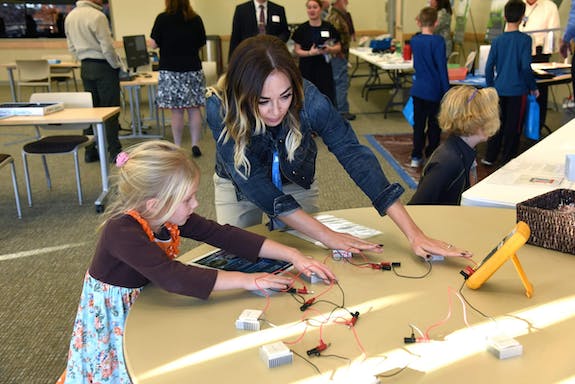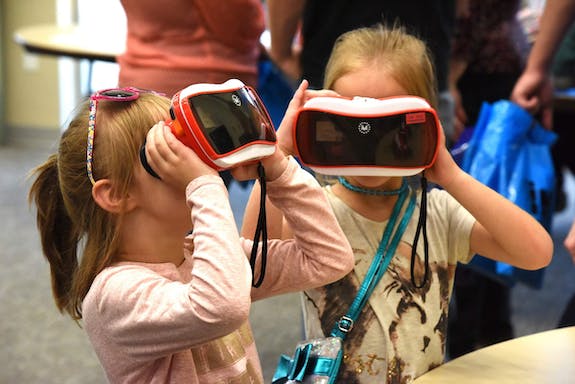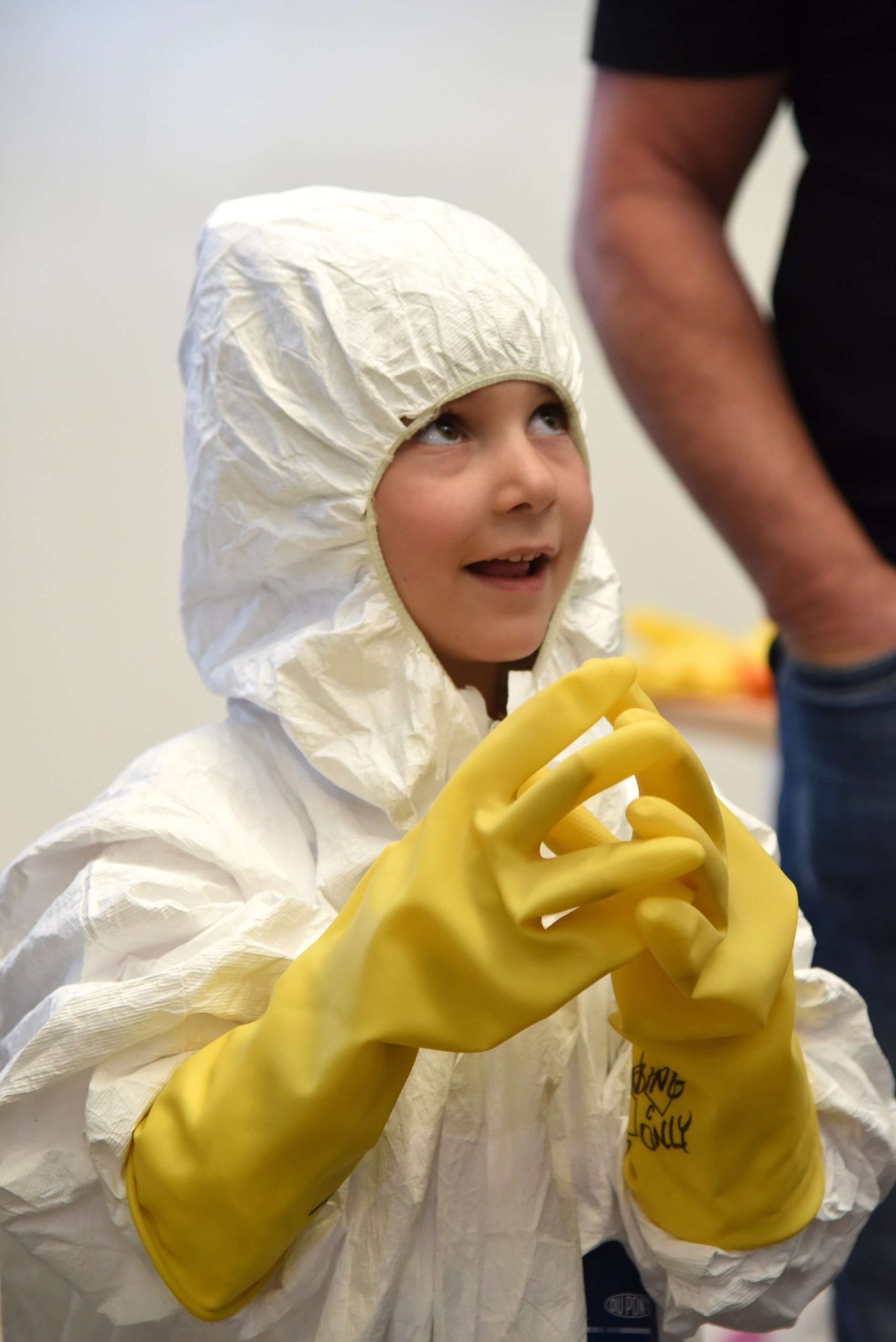Now in its third year, the Idaho National Laboratory-hosted Family Nuclear Science Night has found its stride, offering everything a K-12 student might want to know about fusing or splitting an atom – and much, much more.
The event, held Oct. 18 the INL Meeting Center in the Energy Innovation Laboratory Building, is designed to get students interested in STEM (science, technology, engineering and mathematics) by offering them unique activities. By having local teachers and employees host tables and activities, it’s a great way for INL to make a case for itself and present a fun face to the public.
The event is held the third week of October in conjunction with Nuclear Science Week, a nationwide effort to help people understand the importance of nuclear energy in society. Delivering the welcome, Dr. Todd Combs, INL’s acting deputy laboratory director for Science & Technology, explained that five pellets of uranium have the energy to keep an American family’s lights, appliances, computers and home entertainment systems running for a year, all without producing any greenhouse gasses. While nearly 20 percent of the United States’ electricity comes from nuclear power plants, they are responsible for more than half of the nation’s carbon-free power generation.

INL is looking for a new generation of researchers and engineers, Combs said. Young people need inspiration – “Sometimes it’s all about who clicks with them” – and an awareness of what kinds of opportunities exist in STEM fields.
Attendance at Family Nuclear Science night is limited to the first 350 people who sign up. Hitting that target was no problem this year, said Jennifer Jackson, INL’s K-12 STEM Program manager. Jackson joined the INL team in September, making the jump from Idaho Falls School District 91, where she was director of curriculum and professional development.
An eastern Idaho native, Jackson said she grew up with a limited idea of what went on at INL. “Early on, I saw the lab workers getting on and off the yellow INL buses, but I didn’t have an understanding of the actual research that went on,” she said. But in the schools and in her job with the school district, she developed a much better idea of how eager INL is to help promote STEM – in Idaho Falls and all over the state.

“This event is full of hands-on learning experiences, each of which reflects the amazing work actually going on at INL,” she said. “I think it is really important to demystify the lab and let the public know about the exciting work being done in our own community. There are so many projects here with the potential to be game changers.”
Activities and events this year included a nuclear “magic show,” building edible atoms, viewing a cloud chamber, learning about radiation control (RadCon), suiting up in personal protective equipment, making chromatography butterflies, playing nuclear energy bingo and visiting more than 15 other booths.

The encounters between adults and youngsters at Family Nuclear Science Night could be interesting.
“Can you tell me what an atom is?” asked Gary Brown, at the “Build an Atom” table, directing his question to Hudson Droogh, a seventh-grader from Rocky Mountain Middle School.
“Something when you split it, it blows up?” came the answer, in the form of a question. A demonstration and talk followed, with pipe cleaners and beads to represent protons, neutrons and electrons. The explanation focused on hydrogen (H), its ubiquity and the energy it produces in the stars when H atoms fuse to become helium (He).
“They’ve put together a really good program,” said Brown, 76, a science teacher for 42 years, 36 of them in the Idaho Falls School District. “There’s so much here that the kids probably can’t get through everything,” he said.
Brown remembers the days before anyone had thought up the term STEM. Growing up in the rural community of Sweet, northwest of Boise, science education was limited. When he started at Idaho Falls High School in 1965, he insisted on having lab days twice a week.
The schools’ relationship then with INL – known as National Reactor Testing Station at the time – was different. Brown would have speakers from NRTS and the Atomic Energy Commission come to classes occasionally, and in the ‘80s and ‘90s the lab would help with in-service training. “Teachers would bring back activities they thought were great,” he said.
Brown became an INL outreach volunteer in 2009, helping at events similar to Family Nuclear Science Night and guiding tours at Experimental Breeder Reactor I after the summer intern tour guides had gone back to college. EBR-I has a special meaning for him, he said, because he used to serve on the ski patrol at Kelly Canyon with some of the people who operated it in the ‘50s.
“They couldn’t tell us everything, but they had some interesting stories to tell,” he said.

Just as it was in 2017, Family Nuclear Science Night was “hosted” by students from Rebecca Beck’s Skyline High School dramatic arts class, all playing past luminaries of nuclear research and engineering. Everyone participating received a passport book of short biographies in which they could collect the autographs of the famous innovators, including Albert Einstein, Marie Curie, Walter Zinn and Admiral Hyman Rickover.
Several local educators also volunteered their time to help at the event.
INL’s partners for the event this year included the Idaho American Nuclear Society, North American Young Generation in Nuclear, Idaho Women in Nuclear, Mothers for Nuclear and other local groups.







